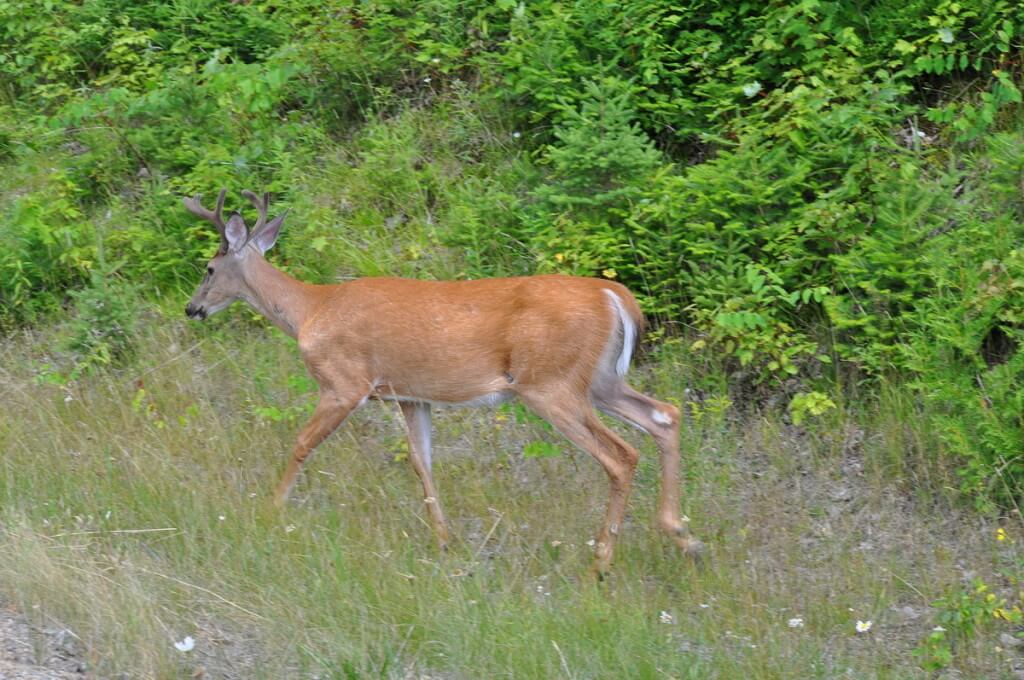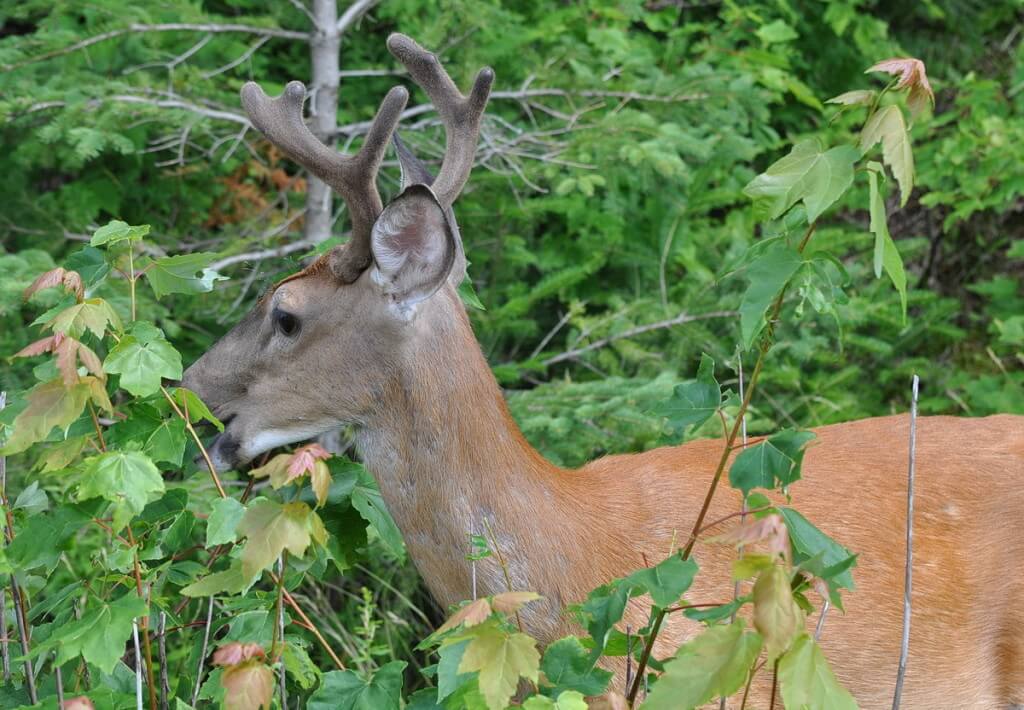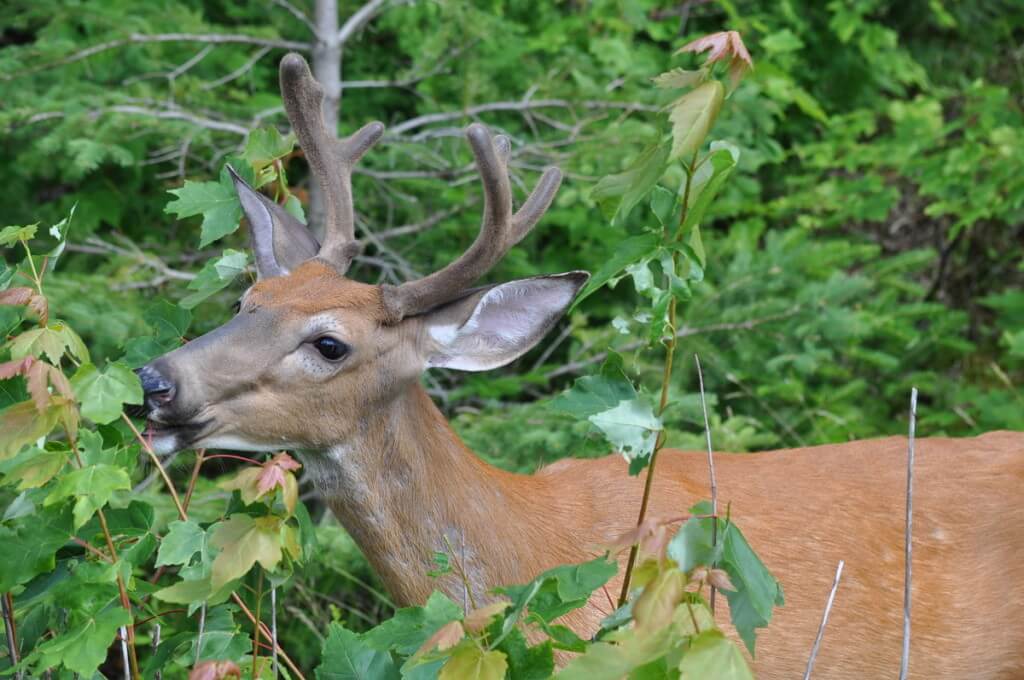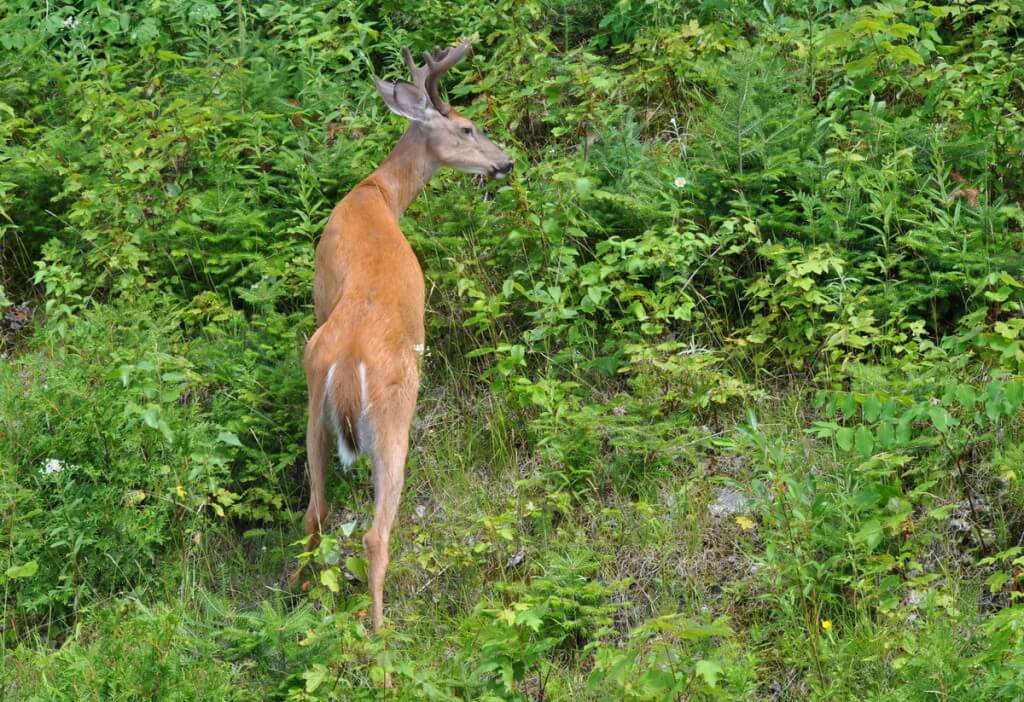White-tailed deer in Algonquin Park
On a visit to Algonquin Park in Ontario, Bob and I were surprised to spot a White-tailed Deer just inside the Park boundary. It was only recently that I had remarked on not having seen a deer in the Park for years whereas at one time, they were very commonplace.
If not for a vehicle ahead of us that applied its brakes then crept forward towards the Park’s West Gate, we could easily have slipped by the buck where it foraged in the ditch. As it was, we erred on the side of caution and moved forward slowly while scanning the edge of the bush to see what the other people had noticed.
It was late afternoon, around 4 o’clock, earlier in the day than when most White-tailed Deer browse. They are usually most active at dawn and dusk especially during the hot summer months when they keep to the forests for shade during daylight hours. Being herbivores, White-tailed Deer can find suitable habitat in any forested area where an abundance of leaves, fruits, nuts, lichen or fungi exist, or adjacent fields and meadows that allow ready access to the bushy areas for cover.
The Deer’s dull grey hair of winter had been replaced by a beautiful reddish pelage that looked particularly shiny and healthy on this individual. When it took notice of our clicking camera, the White-tailed Deer “hid” behind a short sapling, but given the rich tawny coat, it didn’t stand a chance of avoiding detection let alone of blending into the shadows in the summer forest.
We were pleased to see that this Deer is a buck with a small set of antlers that will continue to grow over the course of the summer into an impressive rack with several tines. As the antlers grow, they are sheathed in a thin skin covered with fine beige hair, and this is called velvet. Part of the cooling system for a male White-tailed Deer’s body is the network of tiny blood vessels beneath the velvet. As it carries nutrients to the growing antlers, the blood is cooled by its proximity to the air and rids the buck of extra body heat.
It takes a good four or five months for the antlers to reach full size and finally shed the velvet. In the fall, the antlers harden and then serve a different purpose. A buck uses them to defend his territory and fight rivals for mating rights. Once the antlers are finally shed, sometime over the course of the winter, they continue to be a benefit but this time to other forest dwellers. Like porcupines in South Africa eat Hyena poop for the calcium it contains, so too do porcupines and other rodents gnaw on discarded antlers that provide a source of calcium, salt and other minerals.
It is fascinating how nature has provided for different creatures the means to survive and thrive. This handsome buck continued to mow down the tender new leaves on the maple saplings and will grow strong on the bounty of lush vegetation in the forest.
There are actually three subspecies of White-tailed Deer in Canada out of a total 16 subspecies in North America. Between the border of Manitoba east to Cape Breton, give or take a random distance here and there, it is the Northern White-tailed Deer that occupies the landscape, and that is what we are seeing here. The other two subspecies in Canada are the Dakota White-tailed Deer and the Northwestern White-tailed Deer.
Bob and I did not exit our vehicle for to do so would have spooked the White-tailed Deer. It moved nonchalantly in the ditch parallel to the highway and to my relief decided to remove itself from the danger of passing cars and seek refuge in the depths of the forest. We were off to a good start on that excursion in Algonquin Park.
Frame To Frame – Bob and Jean









